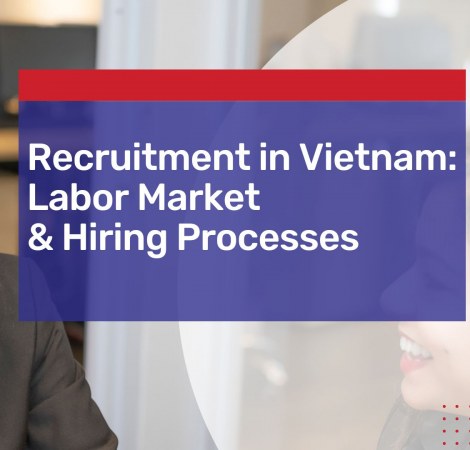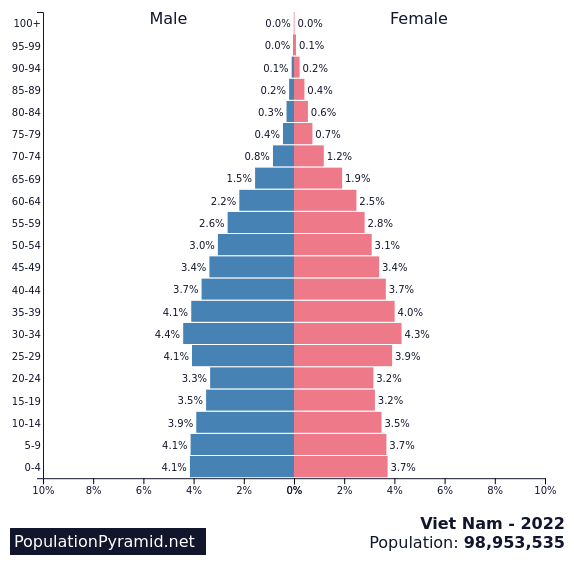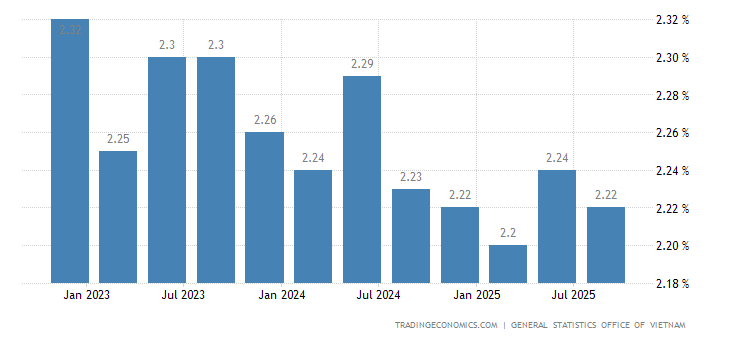Understanding the local labor laws is essential in order to be compliant when you hire and pay people while doing business in Vietnam. Furthermore, understanding the market in order to know your opportunities and expected challenges ensures a more smooth integration. This article’s aim is to assist you in becoming familiar with the Vietnamese labor market in general as well as hiring procedures, labor laws, as well as the resources accessible to you as a business owner.
Find Out About Cekindo’s Recruitment Services in Vietnam
Characteristics of Vietnam’s Labor Market:
Vietnam has experienced rapid yet thorough growth in recent decades. The structures of society are changing together with the economy as a result of a quickly expanding economy.
The most attractive element of Vietnam’s labor market is the size and average age of its demographic. According to a recent article out of the total population of 99 million, 51.6 million are categorized as part of the capable current workforce. Out of those, an average of 58% are under the age of 35.
The industrial and service sectors are now employing more people than ever before thanks to a massive boost to these two industries recently, with particular boosts to the industrial sector which has seen significant quantities of companies moving from China to Vietnam. The services sector contributed to an astounding 41% of the gross GDP.
Vietnam’s Changing Workforce
With approximately 30 million workers under the age of 35, what makes Vietnamese laborers attractive to foreign investors comes down to their flexibility in adopting new technological innovations and putting them into practice. Adding to this the massive growth in the population of young Vietnamese studying abroad, which in turn brings new skills into the labor market.
Despite the favorable demographics of Vietnam’s workforce, many international and domestic businesses have to deal with considerable talent and skills deficiencies between the needs of the company and that of the candidates available, particularly in fields that need highly developed linguistic and technological abilities. This is due to the fact that Vietnam still has an underdeveloped education system. The biggest challenge here involves middle-manager
What to Know About Wages and Salary
The favorable demographics aside, an additional advantage of the workforce available to you in Vietnam is the lower cost, which contributes to lower costs of business operations.
The average pay in Vietnam is significantly lower than in other regions of the globe, including Asia. In Hanoi and Ho Chi Minh City, the minimum wage (updated in 2022) is USD198 (VND 4,680,000), whereas, in many rural areas, the minimum wage is USD138 (VND 3,250,000).
This reflects the most recent updates from the government which occurred in July 2022. It must also be mentioned that for employees with university degrees an additional 7% should be added on top.
RELATED: a Guide to Recruiting Interns in Vietnam
source: tradingeconomics.com
Status of Skills & Education
As was previously said, finding competent workers in Vietnam is a challenge for many businesses, particularly foreign-owned companies.
According to the 2020 GTCI (Global Talent Competitiveness Index), Vietnam is rated 96 out of 132 nations for its capacity to attract, nurture, and retain talent.
According to this report, Vietnam is struggling to find competent workers with the necessary educational credentials, particularly in the areas of technical and vocational abilities.
The economic shift from labor-intensive sectors to tech-driven business areas will undoubtedly be hampered by the skilled worker shortage. As a result, this shortage will have a detrimental impact on Vietnam’s competitiveness, making it more challenging to find qualified candidates. Currently, finding qualified labor is a challenge for 40% of international businesses operating in Vietnam.
Vietnam’s economic development is still being driven by industries with high labor intensity, like manufacturing. To improve worker quality and provide the country’s labor market with more competitive advantages, the government has realized the need to implement comprehensive reforms in all key sectors as the global economy moves toward Industry 4.0.
To meet the needs of the labor market, the Vietnamese government recently took action to enhance technical and vocational training programs for Vietnamese youth via the governmental Decree No. 49/2018/ND-CP.
According to a recent report by The Hanoi Times, thirty percent of workers are anticipated to be skilled workers with certifications in 2025, and 35 to 40 percent in 2030. About 40–45 percent of high school graduates are anticipated to enroll in vocational training in 2025.
As IT (Information Technology) training has been the top priority of Vietnam in terms of vocational training the goal is that 90% of the workforce would be made of up workers with these skills by 2030.
These schools provide courses that cover IT, beautician training, tourism, textiles, construction, mechanics, pharmacist training, and hospitality.
Setting Up Your Recruitment & Human Resource Operations
Once your business is established in Vietnam, there are various options to find and hire skilled personnel.
The recruiting and recruitment process can be outsourced to a third party, which is the most practical method if you want to do it quickly and effectively. A great number of applicants, both locally and globally, are attracted to firms thanks to outsourcing.
If you have to hire foreign employees due to a lack of particular skills and knowledge that is available, the process of hiring a foreigner is more challenging, especially in terms of immigration and visa requirements. The restrictions on foreigner work permits and visas have recently become more strict, with the goal of bringing in relevant and skilled workers that will contribute to the economy and not compete with local existing talent.
Hiring Foreigners in Vietnam, What to Know
Foreigners cannot lawfully work in Vietnam with the use of visas, visa waivers, or residence cards. This is due to the need in Vietnam’s Labour Code that a foreigner get a work permit before beginning any employment there.
The sole exception to applying for the aforementioned work permit is if the applicant is a foreign national and meets the requirements for exemption. For instance, there are foreigners who hold positions of authority in Vietnam’s joint-stock businesses, own limited liability corporations with one or more members, etc.
Recruitment Requirements in Vietnam
A temporary work permit, also known as a TRC, must be applied for via the regional Labor Department if foreign national desires to work in Vietnam. In order to apply for a TRC the employee must have a sponsorship letter from their employer in order to start the process.
Work Permit
For foreigners who work in Vietnam for a longer period of time, usually 3 months or more, a work permit is required. This permit usually lasts for 2 years and can be renewed if necessary.
Business Visa
Only when a foreign worker stays in Vietnam for shorter than three months is a business visa required. Applicants are usually high-skilled contractors needed for short-term projects, especially in infrastructure and IT.
A letter of invitation from the Vietnamese business partner who requires the high-skilled foreign employee is required for the business visa application.
Temporary Residency Card – TRC
Apart from the work permit, all foreign employees must also obtain a TRC, also known as a Temporary Residence Card, which will allow them to travel within the country, as well as entering and exiting the country legally.
About Us
Cekindo is a leading provider of global market entry services in Southeast Asia. We are part of InCorp group, a regional leader in corporate solutions, that encompasses 8 countries in Asia, headquartered in Singapore. With over 500 legal experts serving over 12,000 Corporate Clients across the region, our expertise speaks for itself. We provide transparent legal consulting, setup and advice based on local requirements to make your business perfectly fit into the market with healthy growth.
Don’t take our word for it. Read some reviews from some of our clients.


